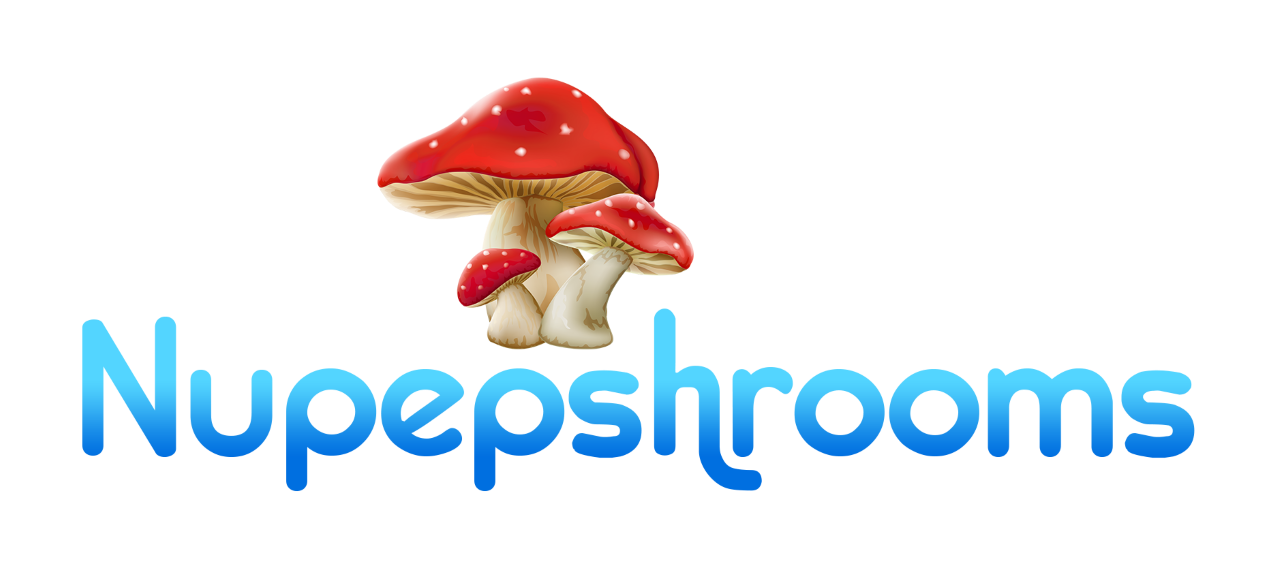Magic Mushrooms
Magic mushrooms and their impact on brain neuroplasticity
One of the key mechanisms underlying this remarkable brain flexibility is neuroplasticity, the brain’s ability to rewire and reorganize itself. While traditional understanding of neuroplasticity focused on learning, memory, and recovery from injury, recent studies suggest that psychedelics, particularly psilocybin, can profoundly influence this malleability in ways that hold potential for treating various psychiatric disorders.
Psilocybin, the active compound found in certain species of hallucinogenic mushrooms, has been widely studied for its effects on the brain’s plasticity and its therapeutic potential. This article explores the intriguing relationship between psilocybin and brain elasticity. We delve into the effects of this compound on neuronal plasticity, its potential to treat psychiatric disorders, and the underlying mechanisms that drive these transformations in the brain.
Psilocybin’s Journey into Brain Plasticity: A Brief Overview
Before diving deep into the science, it’s essential to understand what psilocybin is and how it interacts with the human brain. Psilocybin is a naturally occurring psychedelic compound found in various species of mushrooms, with the Psilocybe cubensis being one of the most well-known.
When ingested, psilocybin is metabolized into psilocin, which interacts with specific receptors in the brain, particularly the 5-HT2A receptors, part of the serotonin system. This interaction gives rise to the profound and unique psychological effects associated with psychedelic experiences.
In the past, the potential of psychedelics was often associated with counterculture movements and recreational use. However, recent research has unveiled their therapeutic potential in the realm of psychiatry, suggesting that these compounds could be the key to treating treatment-resistant depression, anxiety disorders, and other mental health conditions.
The Psychedelic Renaissance
One of the most exciting aspects of this resurgence of interest in psychedelics is their effect on brain plasticity. The term “plasticity” refers to the brain’s ability to adapt, change, and rewire itself. This phenomenon occurs at multiple levels, from the cellular to the synaptic to the network level, and it underlies our capacity to learn, unlearn, and recover from injury. Researchers have been uncovering how psilocybin influences various aspects of this plasticity.
Cellular and Molecular Effects of Psilocybin
At the cellular level, psilocybin has been observed to impact dendritic spines, tiny protrusions on neurons, that play a crucial role in forming connections between them. These dendritic spine formations are key to synaptic strength and neural communication. Studies have shown that single doses of psilocybin can lead to an expression of plasticity that changes dendritic spine density, increasing dendritic plasticity, hence indicating an increase in synaptic connections between neurons, which creates a change in brain activity and functional plasticity.
Furthermore, psilocybin has been linked to changes in gene expression related to plasticity-promoting genes. For instance, the activation of c-Fos expression in certain brain regions suggests a heightened expression of genes associated with neuronal plasticity. This finding is promising as it hints at psilocybin’s potential to enhance the brain’s adaptability.
Neuroplasticity in Action: Cortical and Synaptic Changes
Research indicates that in addition to its effects on neuroplasticity, psilocybin influences synaptic plasticity, the ability of synapses (the junctions between neurons) to strengthen or weaken their connections. This functional neuroplasticity is particularly pronounced in the prefrontal cortex, a brain region crucial for decision-making, emotional regulation, and self-awareness.
Studies suggest that psilocybin enhances synaptic strength, thereby improving the communication between neurons. This boost in synaptic plasticity might explain some of the cognitive and psychological effects of psychedelics, such as heightened creativity, introspection, and altered perceptions of time and space.
Receptor Activation: A Window into Brain Plasticity
The action of psilocybin on 5-HT2A receptors is a key player in its effects on brain plasticity. These receptors are part of the serotonin system, a neurotransmitter system involved in mood regulation, and their activation by psilocybin leads to a cascade of neurobiological events.
When these receptors are activated, they trigger molecular processes that contribute to neuronal plasticity. The activation of the serotonergic system, including the 5-HT2A receptors, is thought to be linked to the long-term effects of psychedelics. It’s these changes at the molecular level that drive alterations in synaptic plasticity, network connectivity, and ultimately, psychological experiences.
The Therapeutic Potential of Psilocybin-Induced Brain Plasticity
While the effects of psilocybin on neural plasticity are fascinating from a scientific perspective, what truly excites researchers, clinicians, and individuals struggling with mental health issues is its therapeutic potential. Here are some of the key psychiatric disorders that are currently being explored for treatment with psilocybin:
1. Treatment-Resistant Depression
Treatment-resistant depression, a depressive disorder in which individuals do not respond to traditional antidepressant treatments, is a major challenge in psychiatry. Studies have shown that a single dose of psilocybin can lead to profound and sustained antidepressant effects, lending itself as a treatment for depression. Psilocybin achieves this by rewiring the brain’s depressive circuits, offering new hope to those who have been living with debilitating depression.
2. Anxiety Disorders
Psychedelic treatments have also shown positive results when treating anxiety disorders. Anxiety disorders, including generalized anxiety disorder and social anxiety disorder, are characterized by excessive worry and fear. Psilocybin has shown promise in reducing anxiety and fear in clinical studies, possibly by reshaping neural circuits that underlie anxiety.
3. Substance Use Disorders
Addiction is another area where psilocybin has demonstrated potential, as the response to psychedelics from individuals suffering from addiction is positive. Some research suggests that it may help individuals break free from addictive behaviors by promoting a shift in thought patterns and increasing self-awareness.
4. Post-Traumatic Stress Disorder (PTSD)
PTSD is a debilitating condition often triggered by traumatic events. Recent studies have shown that psilocybin therapy can significantly reduce the symptoms of PTSD, potentially by altering the emotional processing centers in the brain.
5. Existential Distress and Quality of Life
Psilocybin has also been studied in individuals facing existential distress, such as those with terminal illnesses. It can help individuals confront their mortality, reduce their fear of death, and improve their overall quality of life. The hallucinogenic effects of mushrooms allow individuals to have moments of realization surrounding their lives, which can lead to improved moods and positive behavioral effects.
Although psilocybin, like many other classical psychedelics, has therapeutic potential thanks to its intense psychedelic effects, it is also important to remember that magic mushrooms have subjective effects, meaning not everyone who tries the drug will necessarily be able to use it as a potential treatment.
Potential Risks Associated With Shrooms
Magic mushrooms, known for their active compound psilocybin, have captured the fascination of scientists, therapists, and individuals seeking unique experiences. Like any potent tool, magic mushrooms come with potential risks, and negative effects.
Acute Effects and Control
The use of magic mushrooms can lead to acute effects on the brain and behavior. Individuals may experience alterations in perception, mood, and cognition during a psychedelic trip. While these acute effects are often transient and desirable within the context of a controlled therapeutic setting, there’s a risk of uncontrolled or unsupervised use. In such situations, the experience can be overwhelming and potentially psychologically distressing.
Dose-Dependent Risks
The effects of magic mushrooms function in a dose-dependent manner, meaning the quantity ingested directly correlates with the intensity of the experience. Inappropriate dosing can lead to extreme anxiety, paranoia, and a loss of connection with reality. This highlights the importance of careful dosage and supervision, particularly when the focus is on therapeutic effects.
Brain Function and Activity
Magic mushrooms, like all classic psychedelics, can significantly alter brain function and activity. The mechanisms underlying these changes are not fully understood, but they are likely related to the activation of serotonergic pathways and 5-HT2A receptors. While these alterations are often temporary, the long-term consequences of frequent and high-dose use remain uncertain.
Anxiolytic Effects and Ego Dissolution
Magic mushrooms are known for their anxiolytic effects, meaning they can reduce anxiety. However, this feature can also lead to a phenomenon called “ego dissolution,” where individuals feel a loss of self-identity or a merging with the universe. While this experience can be profound and transformative, it can also be disorienting and distressing for some, potentially affecting their psychological well-being.
The Road Ahead: Clinical Studies and Future Directions
Most studies use double-blind, placebo-controlled designs and are conducted with a focus on safety and ethical considerations. Healthy volunteers, patients, and even individuals with no prior history of psychedelic use have all participated in trials, shedding light on the diverse responses to psychedelics.
Nevertheless, there is still much to learn and understand, as the mechanisms of psilocybin-induced neuroplasticity are complex and multifaceted. Researchers are investigating the long-term effects of psilocybin, its potential for creating lasting changes in the brain, and the optimum doses and treatment regimens.
Recent advancements in neuroscience techniques, such as functional neuroimaging and molecular analyses, are providing valuable insights into the biological underpinnings of these effects. This means responses to treatment could improve in the future. The ultimate goal is to make psychedelic therapy as safe as possible so that more people can experience its therapeutic effects.
Buy Magic Mushrooms Online
If the mechanisms of neuroplasticity have piqued your interest and you want to experience shrooms for yourself, it is essential to source them from a reputable dispensary. Nupep Shrooms is an online dispensary dedicated to providing only high-quality products.
We offer a variety of magic mushroom strains, dried mushrooms, and mushroom-infused products such as edibles and teas. These products are meticulously sourced, cultivated, and prepared to ensure high quality and consistency, making them a popular choice for those seeking a safe and reliable source for their mushroom needs.
Frequently Asked Questions
Magic mushrooms, particularly psilocybin, have been shown to influence cortical neurons, promoting changes in dendritic spine formation and synaptic structural plasticity. This effect is a key aspect of their impact on brain neuroplasticity.
Pyramidal neurons in the cortex are among the neuronal types affected by magic mushrooms. Research suggests that these neurons undergo changes in synaptic strength and connectivity following the ingestion of psilocybin.
Subacute effects refer to the changes in mood, cognition, and perception that persist beyond the acute effects of magic mushrooms. These may include altered thought patterns and increased introspection, often seen in the days and weeks following use.
Yes, magic mushrooms have been associated with cellular plasticity. The precise mechanisms are still under investigation, but it is thought to involve changes in dendritic spine density and synaptic connections between neurons.

